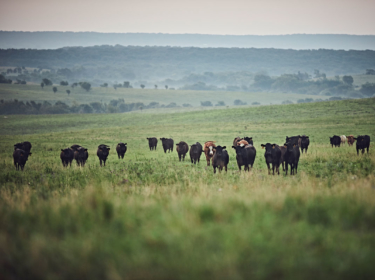Boost Average Daily Gain and Profits with an Effective Deworming Program
Producers use deworming to increase profits.
“When margins are tight, deworming is one of the easiest ways for producers to increase profitability,” said Stephen Foulke, DVM, professional services veterinarian at Boehringer Ingelheim. “Implementing a strategic deworming plan in your herd can pay off with better health, weight gain and return on your investment”1
As more producers choose to deworm their cattle, obvious signs of parasitism, such as bottle jaw and emaciated animals, are declining. Now the signs are often more subtle, but eventually surface as poor performance and lower average daily gains, both of which largely impact anticipated profits.
Parasite populations have expensive consequences
Oftentimes, the initial consequences of parasite populations are hard to see. Parasites can damage the digestive tract, which reduces its ability to absorb nutrients, causing inflammation, protein loss and, in some cases, blood loss. This depresses an animal’s appetite, resulting in lower average daily gain. Heavy parasite burdens can also lessen reproductive performance and negatively impact the animal’s immune system.2
“Cattle exposed to parasites without an effective deworming protocol in place are more likely to become sick, and so they’re not going to respond to treatments as fast as they should,” explained Dr. Foulke.
Parasite populations affect cattle of every age, but can be more detrimental to calves. Young animals that haven’t had the chance to build a strong immune system are especially vulnerable to the negative effects of parasite populations. Deworming these animals in the early stages can provide protection throughout their continued growth.
“It’s easy for small problems to become big when parasites are not controlled on an operation,” said Dr. Foulke. “Issues building on each other can result in a downward spiral, impacting herd health and producers’ bottom lines.”
Timing is everything
The best time to deworm depends on each individual producer’s climate and geography. A good rule of thumb is to be sure cattle are protected by a dewormer anytime they are on green grass. Cattle are more likely to be affected by parasites when pastures are wet, temperatures are warm and in intensive situations where many cattle graze in a small area, increasing the likelihood of parasite exposure.
Normally, it takes about 100 days of continuous control to break the parasite life cycle and reduce the parasite burden on a pasture.3,4 Dr. Foulke recommends using an extended-release dewormer designed to keep working throughout the grazing season. This prevents additional parasite populations from getting established.
“Most dewormers do a decent job of minimizing parasite populations,” he stated, “but once the dewormers are gone, the parasites build right back up. That’s when an extended-release dewormer comes into play.”
“This is the first year I’ve ever used an extended-release dewormer, and my heifers have stayed in the best shape, running on grass all summer,” said Rick Frye of Frye Cattle in Independence, Iowa. “They’re anywhere from 50 to 75 pounds heavier than last year.”
Because each operation is unique, producers are encouraged to work with their local veterinarian to determine the ideal administration time and the best deworming product to effectively combat parasites.
Proper dosing is key
Of course, as the cost of feed rises, the value of deworming increases, too. To get the best results from a dewormer, proper dosing and application are critical. “Oftentimes, producers quickly look at cattle to estimate their weight, but this is not an ideal way to determine an accurate dosage amount,” Dr. Foulke noted.
Without administering the right dosage for each individual animal, producers cannot expect the dewormer to be utilized to its fullest potential in their herd. According to Dr. Foulke, proper dosing will ensure producers are making the most of their money, while decreasing the chances of parasite resistance down the road.
“We don’t need to feed the parasites — they’re very expensive hitchhikers,” concluded Dr. Foulke. “We do want to feed for average daily gain and set our operations up for success.”
1 Lawrence JD, Ibarburu MA. Economic analysis of pharmaceutical technologies in modern beef production in a bioeconomy era. Iowa State University. 2009. p. 1-28Available at: http://www.econ.iastate.edu/faculty/lawrence/Pharma%202007%20update.pdf. Accessed July 8, 2019.
2 Wiggin CJ, Gibbs HC. Studies of the immunomodulatory effects of low-level infection with Ostertagia ostertagi in calves. Am J Vet Res 1989;50(10):1764–1770.
3 Morley FH, Donald AD. Farm management and systems of helminth control. Vet Parasitol 1980;61:105–134.
4 Brunsdon RV. Principles of helminth control. Vet Parasitol 1980;6(1–3):185–215.


